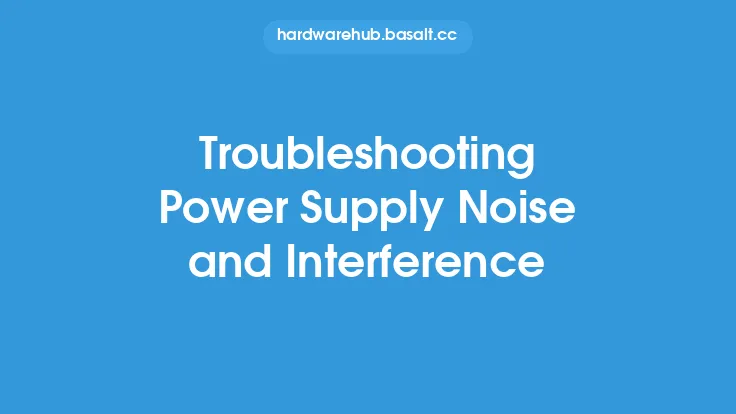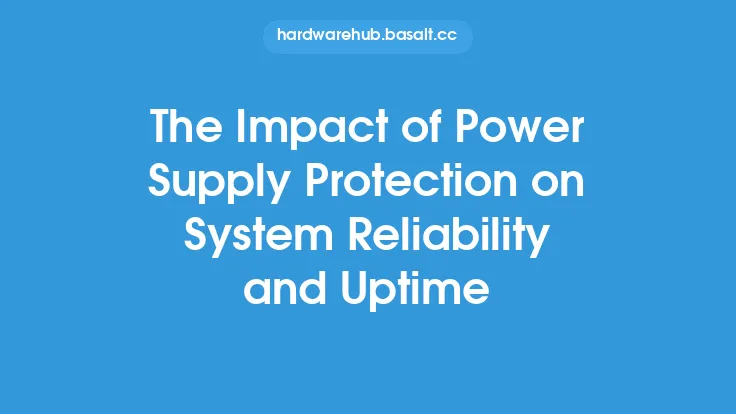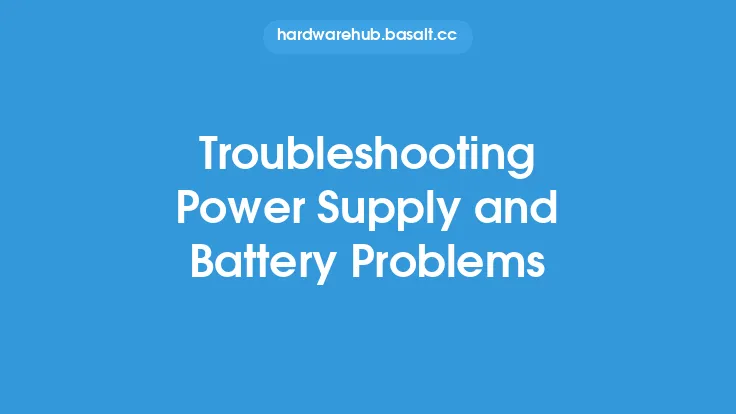When it comes to power supplies, noise reduction and silent operation are crucial aspects that can significantly impact the overall user experience. A noisy power supply can be distracting, annoying, and even affect the performance of other components in the system. In this article, we will delve into the techniques and technologies used to reduce power supply noise and achieve silent operation.
Introduction to Power Supply Noise
Power supply noise refers to the unwanted electrical signals that can be generated by a power supply unit (PSU). These signals can be in the form of electromagnetic interference (EMI), radio-frequency interference (RFI), or audible noise. The main sources of power supply noise are the switching components, such as transistors and diodes, which can generate high-frequency signals. Additionally, the cooling fans used in power supplies can also contribute to audible noise.
Techniques for Reducing Power Supply Noise
To reduce power supply noise, manufacturers employ various techniques, including:
- Active filtering: This involves using active components, such as transistors and operational amplifiers, to filter out unwanted signals.
- Passive filtering: This involves using passive components, such as capacitors and inductors, to filter out unwanted signals.
- Shielding: This involves using a shield to absorb or block electromagnetic radiation.
- Component selection: This involves selecting components that are designed to minimize noise generation.
- Circuit design: This involves designing the circuit to minimize noise generation and propagation.
Silent Operation Techniques
To achieve silent operation, power supply manufacturers use various techniques, including:
- Fanless design: This involves using a heat sink or other cooling method to dissipate heat, eliminating the need for a fan.
- Low-RPM fans: This involves using fans that operate at a low speed, reducing audible noise.
- Fan control: This involves using a controller to adjust the fan speed based on the power supply's temperature and load.
- Acoustic insulation: This involves using materials to absorb or block sound waves.
Power Supply Components and Noise Reduction
The components used in a power supply can significantly impact noise reduction. For example:
- Capacitors: Capacitors can be used to filter out unwanted signals and reduce EMI.
- Inductors: Inductors can be used to filter out unwanted signals and reduce EMI.
- Transformers: Transformers can be used to isolate the power supply from the rest of the system, reducing noise propagation.
- MOSFETs: MOSFETs can be used to reduce switching noise and improve efficiency.
Power Supply Topologies and Noise Reduction
The topology used in a power supply can also impact noise reduction. For example:
- Linear power supplies: Linear power supplies use a linear regulator to regulate the output voltage, which can generate less noise than switching power supplies.
- Switching power supplies: Switching power supplies use a switching regulator to regulate the output voltage, which can generate more noise than linear power supplies.
- Resonant power supplies: Resonant power supplies use a resonant circuit to regulate the output voltage, which can generate less noise than switching power supplies.
Measuring Power Supply Noise
To measure power supply noise, various methods can be used, including:
- Oscilloscopes: Oscilloscopes can be used to measure the voltage and current waveforms of the power supply.
- Spectrum analyzers: Spectrum analyzers can be used to measure the frequency spectrum of the power supply noise.
- Noise meters: Noise meters can be used to measure the audible noise generated by the power supply.
Conclusion
In conclusion, power supply noise reduction and silent operation are critical aspects of power supply design. By using various techniques, such as active filtering, passive filtering, shielding, component selection, and circuit design, manufacturers can reduce power supply noise and achieve silent operation. The components used in a power supply, such as capacitors, inductors, transformers, and MOSFETs, can also impact noise reduction. Additionally, the topology used in a power supply, such as linear, switching, or resonant, can also impact noise reduction. By understanding the techniques and technologies used to reduce power supply noise, users can make informed decisions when selecting a power supply for their system.





